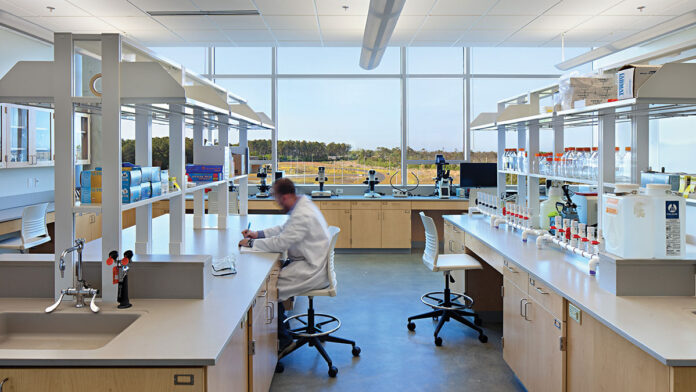Summary:
Laboratories around the world provide the high-tech environments researchers need to uncover groundbreaking medical therapies, make agricultural advancements, and develop innovative approaches to the world’s greatest challenges. Successful laboratories are the result of extensive planning, collaboration, and coordination between the design team and all impacted stakeholders. Even the smallest detail, performed incorrectly, can have a detrimental impact on lab function and safety – so getting these spaces right for the scientists working in them is critical.
1. Involve all stakeholders in your design kick off meeting – and encourage ongoing, regular input.
This is a hot topic in lab design right now, as involving all stakeholders early and often in the design process is recognized as critical but can present a variety of challenges. This group potentially includes many people and many different perspectives, but gathering those differing viewpoints provides an invaluable foundation. Failing to involve a comprehensive stakeholder group at project kick off and in early design decisions will almost certainly result in a cascade of future problems impacting design, construction, and long-term lab use.
2. Size the lab to meet user requirements.
3. Determine control areas early in design.
With emerging design trends geared toward transparency and “research on display,” determining necessary control areas early in design enables lab planners and architects to create a building design that features desirable aesthetics – and meets all code and safety requirements. Primarily, determining control areas early in design focuses on defining the type and quantity of the chemicals that may be used in the lab to understand the impact on the overall design
4. Plan for chemical storage.
5. Coordinate fume hoods with HVAC control system.
6. Collaborate with mechanical, electrical, and plumbing engineers to ensure well-coordinated drawings.
7. Get a solid, comprehensive equipment list.
8. Consider equipment heat gains.
9. Check door widths, turning clearances, and equipment paths throughout the facility.
10. Know when and when not to use flexible casework.
Analysis:
While the Digital Participation Lab is not a science laboratory, it is still considered a lab so I thought it would be helpful to read about how science labs plan out their spaces. A lot of the information laid out in the article can be translated into more of a technology lab. For example, the first point was about ongoing communication with stakeholders which is relevant to my project. Also, figuring out control areas, the equipment that is needed, and plans for storage. The last tip was particularly interesting, it touched on the pros and cons of flexible casework. Flexible casework is essentially modular, mobile lab equipment. It goes over the benefits of this option, but points out that it is not always sufficient for what’s really needed in the space; it can often overcomplicate a design. This is something for me to keep in mind when designing for this space, adaptability is important but not when the useability is complicated and hard to use. The primary research will hopefully help with uncovering what the users really want.
Source:
Brader, B. (2021, March 18). Top 10 tips for Successful Lab Design. Clark Nexsen. Retrieved September 12, 2022, from https://www.clarknexsen.com/blog-top-10-tips-successful-lab-design/




